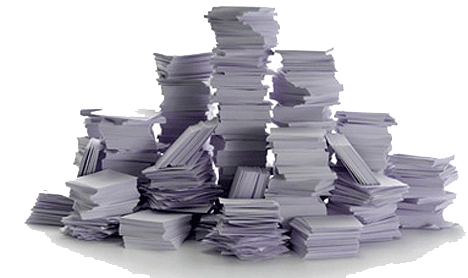PPM
 There are a number of factors to consider when you’re ready to choose a new printer – cost, size, color or black & white. Another factor you will be faced with is a printer’s PPM, or pages-per-minute, rating.
There are a number of factors to consider when you’re ready to choose a new printer – cost, size, color or black & white. Another factor you will be faced with is a printer’s PPM, or pages-per-minute, rating.
PPM is the measurement standard for how fast a printer can print a standardized page. There are many types of printers on the market and the PPM for each printer is different.
If a printer has a PPM of 25, it means the printer can print twenty-five pages of text per minute. You will often see a separate rating for color PPM and black-and-white PPM, because most printers generally print color pages a bit slower.
History
In the late 1950’s, the few enterprise (office) level printers around were “impact” printers. These daisy wheel and dot-matrix devices were noisy, cumbersome and slow. Back then, print times were not measured in minutes, but by how many characters-per-second a device could print.
In the 1970’s, inkjet and laser printers became the mainstay of commercially available printers. By that time, most printers had the ability to print individual characters at blindingly fast speeds. This is when the method of rating printers by their page-per-minute print speeds became necessary and standardized (for the most part).
Printer Measurement Standards
Standardized testing has evolved since then. Today, most (but not all) printer manufacturers follow the International Standards Organization, or ISO, printer speed measurement standard ISO/IEC 24734. This standard designates test files, test setup procedures, test runtime procedures, as well as the reporting requirements for digital printing productivity measurements for printing speed, which allows for side-by-side comparisons of similar printers. This standard, however, does not just base the standard on how many text pages per minute a printer could produce, but how many images per minute a printer can produce. This allows for more uniform testing of today’s highly capable and graphics-savvy printers.
Copier Measurement Standards
Many businesses today rely on multifunction printers that also serve as the office copier (not to mention scanner and fax). A separate ISO specification, ISO/IEC 24735 was developed for determining copying speeds. This standard provides the method for measuring digital copy speeds and is applicable to digital copying devices with an automatic document feeder. It is intended for both monochrome and color digital copying devices. ISO/IEC 24735 designates all the same parameters that the printer speed measurement standard (ISO/IEC 24734) does but is applied to digital copying.
 How fast is fast enough?
How fast is fast enough?
Among desktop and enterprise-level printers, monochrome printers are always going to have a higher PPM considering the fact that they have only one color to worry about. Commercial desktop printers, such as those you might find in a small business or in a home office, run the range from 3 pages per minute to 20, depending on the model and the print method.
Typically, printers capable of speeds in excess of 30 pages per minute are classified as fast printers. While there are enterprise and professional level printers that can churn out prints at over 100 pages per minute, most businesses do not require printing speeds that high.
For anything more than the occasional black and white document, a multifunction printer (mfp) is what most small and medium sized businesses rely on. MFP speeds generally range from 25 PPM up to 90 PPM. The speed you want for your business or organization is largely dependent on your print volume.
Return to the Tech Trends Newsletter

